The Diffa region, located in southeastern Niger and bordering Nigeria to the south and Chad to the east, faces many health challenges, including routine immunization of children. The region is experiencing increasing insecurity due to the presence of armed groups, making it difficult to establish a strong and effective health system. In this context, mapping insecure areas in the Diffa region can help improve childhood immunization coverage.
Insecurity mapping involves identifying areas where security is precarious or threatened, in order to better understand the risks to populations and adapt interventions accordingly. This approach can be used to improve routine childhood immunization by identifying areas where access to health services is limited or non-existent due to insecurity.

In the Diffa region, the mapping of areas of insecurity was carried out using data collected on the ground, such as surveys of health facilities and reports from government agencies. This data was combined with maps to identify areas where security is precarious or threatened.
Once areas of insecurity have been identified, local health authorities and health partners can work together to put in place tailored strategies to improve childhood immunization coverage. This may include using mobile clinics to reach populations living in remote areas, or setting up temporary health centers to serve areas where health services are limited.
This mapping of insecure areas can also be used to raise awareness among communities about the importance of vaccination and to build confidence in health services. By involving communities in the mapping process and informing them of the risks associated with insecurity, local authorities can help improve communities’ understanding of health issues and strengthen collaboration with health partners.
Insecurity at the expense of health
Since 2015, the Diffa region has been facing a situation of insecurity that has caused a lot of displacement of both internal and external populations. Four health districts are particularly affected by insecurity: Bosso, Diffa, Mainé Soroa and N’Guigmi. This situation has had a strong impact on the health system, resulting in a significant reduction in access to and use of primary care services. Despite satisfactory vaccination coverage, the routine immunization service has not been spared. Indeed, cases of vaccine-derived polio virus (cVDPV) continue to be reported, reflecting the existence of many unvaccinated children at the community level.
As of December 2022, three (3) out of the six (6) districts in the region have reached the measles epidemic threshold. This partly explains the infant mortality rate, which is still high in the region and in the country.
Displaced and refugee populations
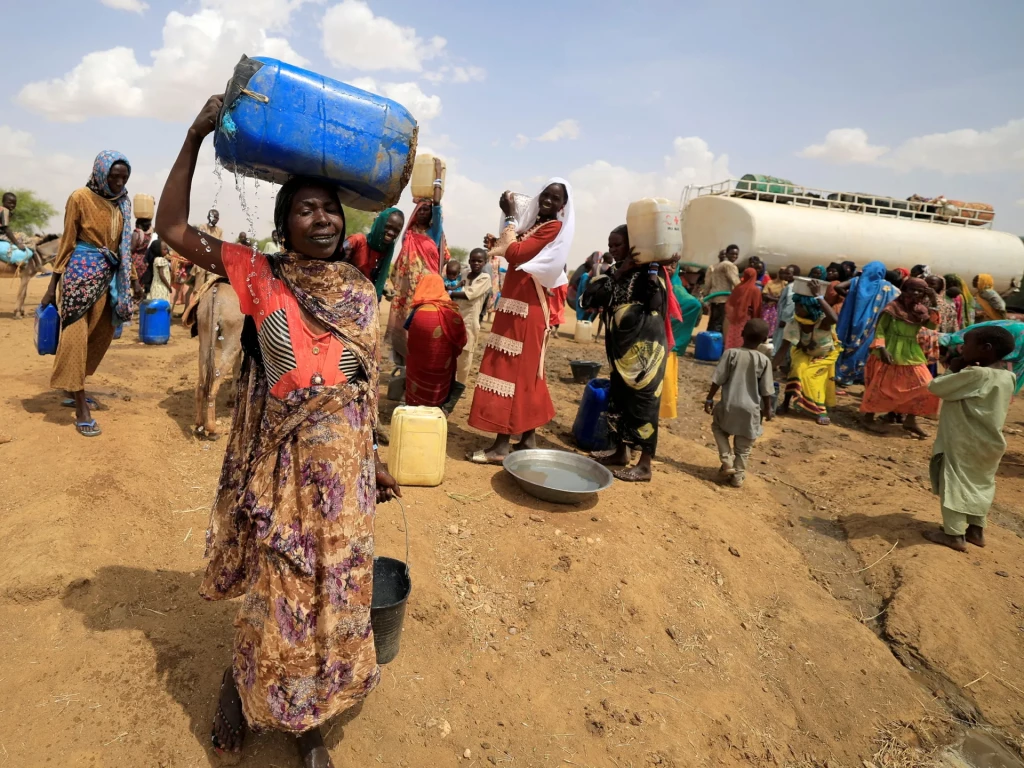
According to the Directorate of Civil Status and Refugees (DREC), MAH/GC, in 2021, the Diffa region recorded approximately 270,000 people in situations of forced displacement (74,621 households) in the region. Nigerian refugees account for 47 per cent (127,233 people), internally displaced persons (IDPs) about 39 per cent (104,588), and other categories account for 24 per cent. These refugees and IDPs are mainly located in the districts of Diffa, Bosso, Maine Soroa and Nguigmi.
In this context of security challenges, efforts are being made by the region’s health services to reach the entire target with the support and support of the defence forces and technical and financial partners.
The last coverage survey conducted in 2017 highlighted many challenges. The drop-out rate, specific to pentavalent, was 16% and Zero Dose children at 9%. Added to this is the lack of control over the target of displaced and refugee populations, who are often highly mobile and inaccessible.
Mapping to innovate
It provides an overview of villages in an insecure situation in terms of accessibility and access to basic social services, including routine immunization.
It is a tool to help plan and manage the conditions of access to vaccination services for populations in situations of insecurity that makes it possible to propose innovative strategies and approaches for better access to vaccination services for these populations.
The goal is to reduce the number of under-vaccinated children and zero doses.
To carry out this mapping, questionnaires were administered to the Districts (Diffa, Bosso, Maine Soroa and Nguigmi) to collect information on (i) the number of villages located in the insecure areas, (ii) the population and the EPI targets, (iii) the accessibility and (iv) the existing strategies to reach children in these particular areas. These districts were selected on the basis of the literature review (reports from UN agencies and civil registration services) and interviews with regional health authorities. These sources of information have shown that these 4 districts concentrate more than 95% of IDPs and refugees.
Data extraction from Niger’s District Health Information System (DHIS2) was carried out to compare immunization coverage rates before and during episodes of insecurity, thus providing elements for comparison between districts in a situation of insecurity and those that are spared.
Main results of this mapping
Evolution of vaccination coverage in Penta1 from 2017 to 2021

The security situation had a definite impact on vaccination performance from 2017 to 2021.
The number of children vaccinated with Penta 1 dropped significantly between 2017 and 2018 before stabilizing between 2018 and 2020. The coverage rate in Penta 1, on the other hand, increased by more than 25 points between 2017 and 2018 before experiencing a slight decrease between 2019 and 2021. This drop in vaccination coverage in Penta 1 is believed to be the result of the return of displaced Nigerians to their villages of origin following a lull noted locally.
Evolution of the number of children vaccinated by health districts
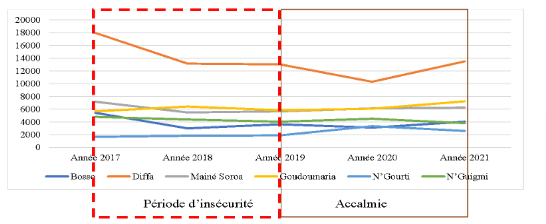
The number of children vaccinated with Penta 1 in districts in insecure areas follows the same trends as at the regional level. Diffa and Bosso were the first districts to be affected by insecurity, which could explain the larger decline in the number of children vaccinated with Penta 1 in these two districts between 2017 and 2018. Conversely, the districts of Goudoumaria and N’Gourti, located outside the insecure areas, saw a continuous increase in the number of children vaccinated with Penta 1 between 2017 and 2020. The insecurity then spread to the districts of Mainé Soroa and N’Guigmi, which had previously been spared. From 2018 onwards, a certain lull led to a stabilisation in the number of children vaccinated with Penta 1, then a slight increase between 2019 and 2021.
The situation of insecure villages

38% of the population of Diffa is located in an insecure zone, representing more than 56% of the population of the 4 districts located in an insecure zone. These populations in insecure areas are spread over 306 villages across the 4 districts.
Diffa and Bosso have more than 60% of their populations located in insecure areas. This poses significant challenges in terms of the availability and continuity of vaccine service provision.
Accessibility of the villages
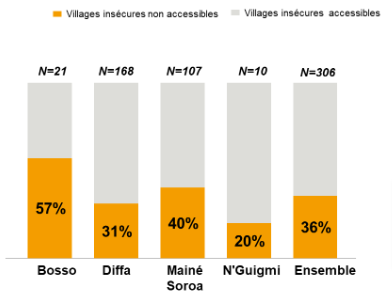
109 of the 306 villages located in insecure areas are inaccessible. The districts of Diffa and Bosso have the highest number of insecure and inaccessible villages. The inaccessibility of villages is linked to the fear of kidnappings, attacks or explosive devices.
Tailor-made interventions
One of the most important strategies for vaccination in the insecure areas of Diffa is the establishment of mobile vaccination teams. These teams are made up of health professionals who travel to hard-to-reach areas to administer vaccines to children. Mobile immunization teams are essential to reach children living in the most remote areas, where insecurity prevents health workers from accessing local health centers.
Another important strategy is the use of fixed vaccination points in safer areas. These vaccination points are often located in health centres, schools and refugee camps. Children can be vaccinated free of charge, without having to travel long distances to reach a health centre.
In addition, mass vaccination campaigns are regularly organized in the Diffa region to reach more children in a limited time. These campaigns are carried out in collaboration with international partners such as UNICEF and WHO. Vaccination campaigns are often preceded by community outreach to encourage parents to bring their children to be vaccinated.
Despite these efforts, challenges remain for vaccination in the insecure areas of Diffa. Ongoing insecurity in the region has led to temporary closures of health centres and the suspension of some vaccination campaigns. Armed conflict has also led to massive population displacement, making it even more difficult for displaced children to access immunization.
However, it has been found that conventional approaches to routine immunization do not effectively reach all children eligible for routine immunization, resulting in a continued reduction in the number of children vaccinated. In addition, there is a lack of specific and ongoing interventions targeting children eligible for vaccination and living in IDP camps, especially those who are not official. Finally, more than a hundred villages remain inaccessible to health workers due to security constraints.
What are the solutions to promote vaccination?
- In order to address this, there is an urgent need to set up a coordination framework between partners involved in the implementation of routine immunization activities to develop more synergy in approaches;
- On the other hand, it is necessary to advocate for the local recruitment of health workers from the population in order to retain the staff in charge of offering the vaccination service; and to promote the establishment of mixed teams (defence forces and health workers) for the deployment of services in insecure areas. Finally, it would be necessary to organize weekly vaccination sessions by involving community relays and opinion leaders during large local markets.
In conclusion, Niger’s health authorities have put in place several strategies to ensure vaccination in the insecure areas of Diffa. Mobile immunization teams, fixed immunization points and mass immunization campaigns are all ways to reach the most vulnerable children in the region. However, much more needs to be done to overcome challenges related to insecurity, community sensitization and funding to ensure that all children in the Diffa region are vaccinated against vaccine-preventable diseases.


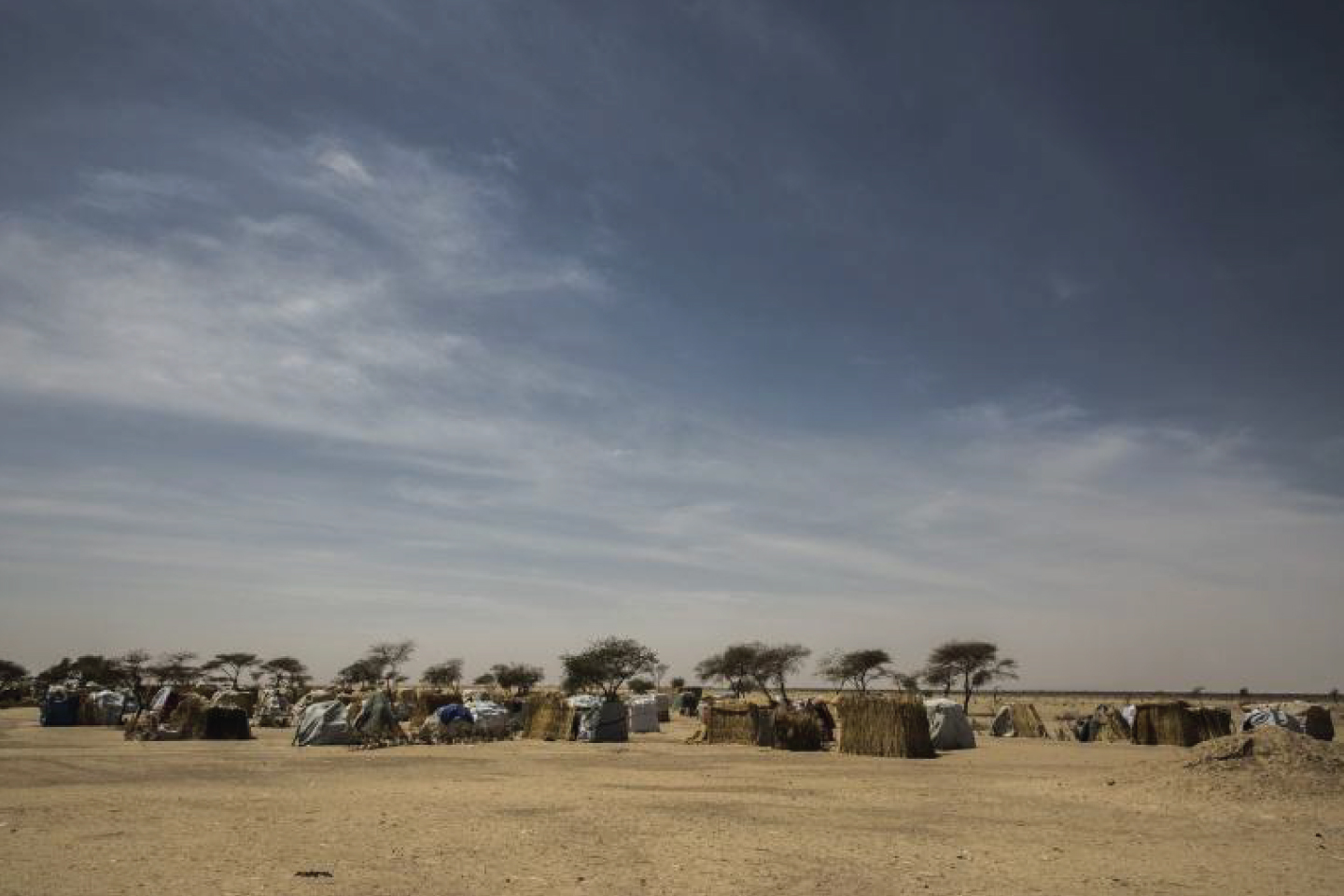
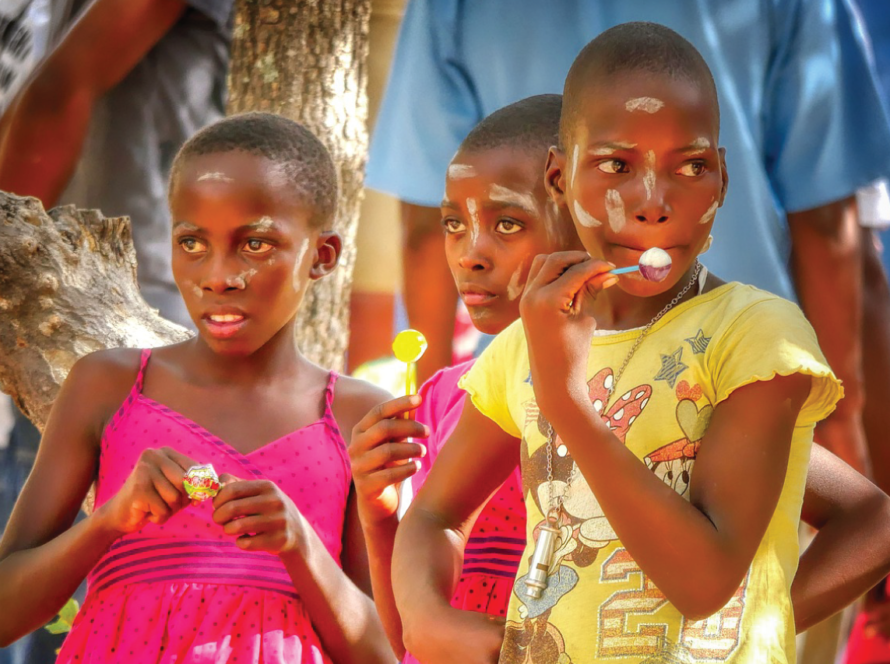

1 Comment
Сasino_Glory_yrMr
Glory Casino Payment Options: Fast, Secure and Convenient
glory casino app [url=https://glorycasino24.online]https://glorycasino24.online[/url] .
Comments are closed.